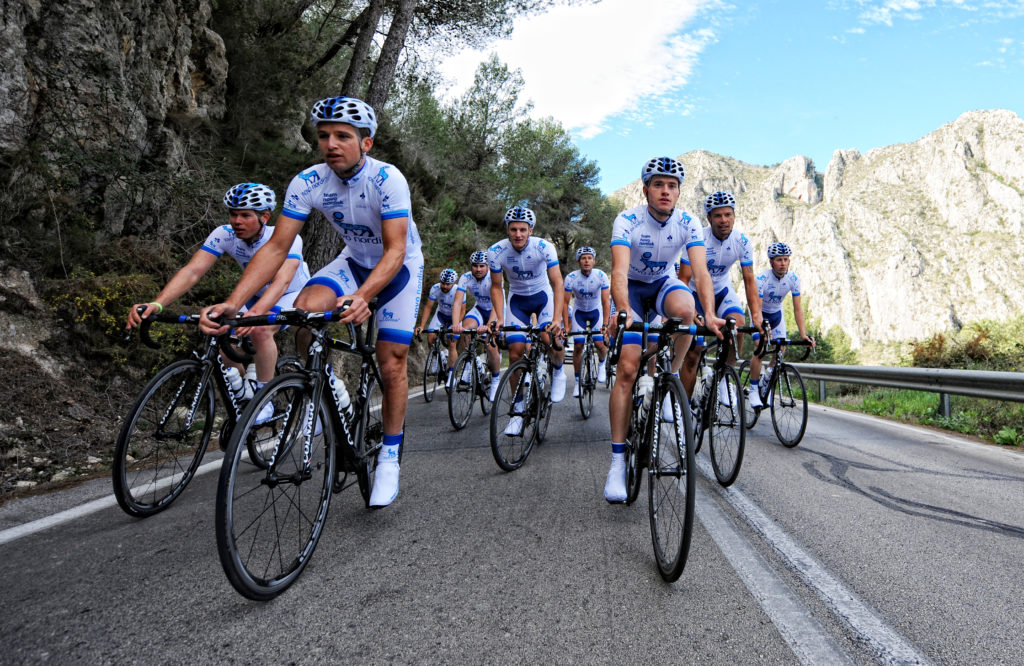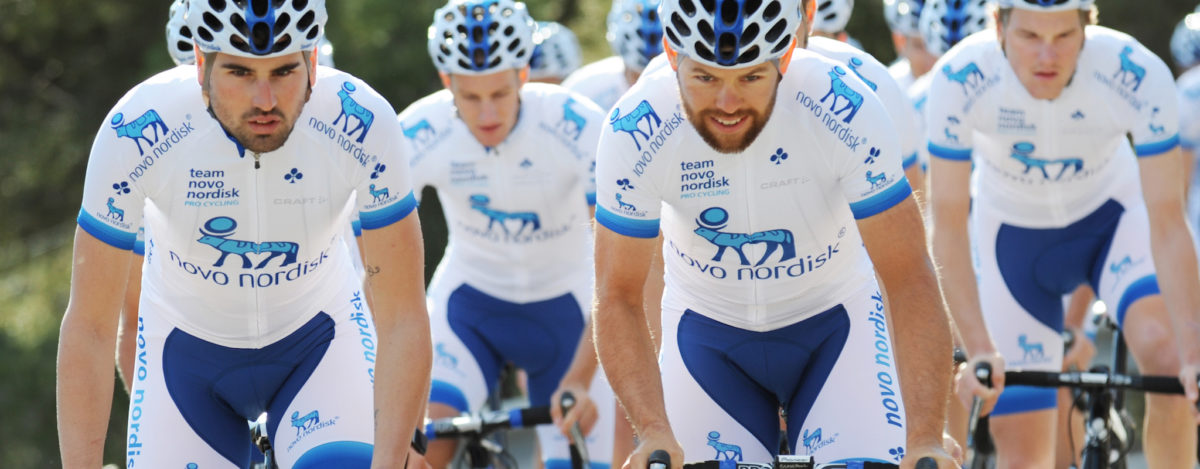Phil Southerland on Advocacy, Action + Type 1
If you know the name Phil Southerland, you are probably aware of his multiple achievements in the type 1 diabetes (T1D) community, especially when it comes to the athletic realm, such as his serving as the CEO of Team Novo Nordisk, the all-diabetes pro-cycling team. Phil was diagnosed with type 1 diabetes at 7-months-old, but what he also developed early in his life was a positive outlook and an unrelenting vigor.
“I know the majority of people hear ‘7 months’ and they think ‘Oh God, how difficult,'” Phil said. “Every memory I’ve ever had in life involved type 1 diabetes. The fact that I was diagnosed so early really felt as though it was a blessing in disguise, because it is the only way of life that I have ever known.”
Though his main call to action is that of exercise, or as he refers to it, “the billion-dollar drug that never gets prescribed,” he certainly doesn’t stop there. Now at the age of 34, Southerland is perhaps more involved with the disease than in his earliest years. Although he has retired from professional cycling, he is constantly working towards ways to better the lives of those with diabetes.
His overall disposition he attributes to his parents, who both taught him to be self-reliant. As Phil recalls, his father would let him practice injections on him when was only 3 or 4 years old.
“I was getting to draw up seven units of saline, ten units of saline, twelve units of saline. I would swab the alcohol on his leg, pinch the skin and give the injection and that was that. So he taught me at a very young age how to inject myself.”
His mother had a different approach, one that stuck with him as he recalled not wanting to take his insulin at a birthday party.
“I just wanted cake and not the shot. She told me, ‘You will go blind,’ and to me, understanding the consequences of not controlling diabetes was a very big motivation to control it, and make sure that I didn’t go blind.” From that day forward at the early age of 6, Phil began to control his diabetes on his own.

Between his two organizations Team Novo Nordisk and Team Type 1, Phil has his hands full, as do the 190 student-athletes that he is responsible for supporting. Phil never lets T1D keep him from accomplishing his goals, and in many ways he feels as though it has allowed him to accomplish more. He even credits his current good health to the disease.
“I think the way we change (people’s outlook) is to continually talk about all the good things that come from having diabetes,” Phil said, “and the strength that having diabetes teaches you. I am probably healthier now 34 years into life because I have had diabetes this entire time.” That message is one that he hopes to share with the entire diabetes community, shifting the focus on what can’t be done to what can.
Four years ago Southerland created Team Novo Nordisk, based on a shared vision to inspire, educate and empower people around the world affected by diabetes. Team Novo Nordisk is a global all-diabetes sports team of cyclists, triathletes and runners, spearheaded by the world’s first all-diabetes UCI Professional Continental cycling team. Cycling has been important to Phil since he was 12 years old, from the first time he saw the Tour De France. That, coupled with an incident involving a Snickers bar.
“When I was 12, I ate this Snickers bar that I got at school and my blood sugar went sky high. At the time, the insulin took two hours to work and I wasn’t very patient at 12, nor am I today,” Phil admitted, “So I realized that I could ride my bike to the gas station and eat a Snickers bar, then ride around for a few hours and my numbers would be good. So I started riding my bike so I could eat candy bars.”
After participating in continuous glucose monitoring (CGM) trials in 2004 and 2005, Phil realized how much information he could gather in a continuous and rapid fashion. He immediately approached the company, as he was about to embark on Race Across America.
“I have to have this product, my team is going to ride across the country and we need to have this,” he told them. After enlisting the help of his physician Dr. Bruce Bode, an endocrinologist based in Atlanta, he was able to secure CGMs for his team. In 2006, Southerland assembled a group of eight cyclists with type 1 diabetes to take on the grueling 3,000-mile Race Across America and raise diabetes awareness. The team went on to win the event in 2007, 2009 and 2010 and quickly became a magnet for athletes with diabetes, and is always recruiting for new athletes with T1D.
Phil recognizes that the main obstacle facing diabetes as a whole is financial. He believes that through a certain unity, more pressure can be placed on politicians to fund research and more money can be raised by groups such as JDRF and ADA.
“If you look, there is 224 million dollars in public health funding for non-communicable diseases, that’s diabetes, cardiovascular, cancer and chronic pulmonary lung disorder. So the majority of the diseases that are killing people in the world have just a fraction of the funding,” he said, with aspirations of eventually reaching the president with these issues.
Phil’s true calling is one of advocacy and action, with the belief that there is strength in numbers. He supports the notion of fighting diabetes on a united front, regardless of whether it is type 1 or type 2.
“I just think (people with) type 1 and type 2 really need to stand together, because a million and a half people with type 1 diabetes is a decent size voice, and if you include our family members there are five, six million people directly impacted by type 1 diabetes. Still, if you magnify that to the type 2 space and we can all unite together, you are talking 100 million strong in the US alone, and that’s enough to make some noise.”
While recognizing that the challenges that people with type 2 face are different from his own, Phil doesn’t view them as lesser. He refers to the challenges facing type 2 as “utterly complex” and believes that many people with type 2 are living with a disease due to habits they learned before the age of 8.
“Right now there is a huge gap, and I believe that gap can be narrowed if all the advocates from the diabetes world band together to fight. We can make the pile a lot bigger for all of us and that’s the challenge for the future. I think the companies out there that are investing in us as people are going to see a big return in the years to come. We aren’t going to quit because it impacts us every single day, every morning, every meal, every time we go out and exercise— diabetes is a part of us. We have to make it better for the next generation, otherwise we have big problems coming up in the next 20 to 30 years.”
Read Type 1 Training Tips from a National Champion Cyclist by Mandy Marquardt.





